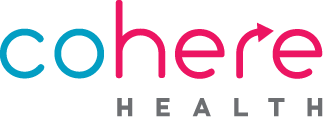Although healthcare access should be a fundamental right for all, the reality is stark: access to quality care and healthy living conditions varies dramatically across communities. Achieving health equity ensures everyone has an equal opportunity to live a long and healthy life, regardless of their background or zip code. Unfortunately, the path to health equity isn’t always linear. It is essential to understand the many challenges of forging a path toward a truly equitable healthcare system.
Closing the health gap with SDOH data
As a physician who has seen the disparities in healthcare access and outcomes, particularly in underserved communities, I care about a patient’s health far beyond what happens within the clinic walls. Social determinants of health (SDOH), like access to transportation, safe housing, quality education, and healthy food, play a vital role in a patient’s health outcomes. This is why we see a rise in declining health in low-income neighborhoods and among underserved communities.
For example, a recent study found that a “patient’s neighborhood and the hospital where they received treatment were both associated with risk of death after commonly performed inpatient surgical procedures.” Living in areas with high poverty rates, low educational attainment, and poor housing quality heightened the risk of postoperative mortality for patients, irrespective of whether the procedure occurred at a top-tier hospital. Effectively capturing and utilizing this data is crucial for attaining health equity.
Unfortunately, there’s a substantial obstacle to collecting this kind of data. Most of the time, we simply don’t have it–it’s like trying to navigate patient care with a blind spot. There are instances when a patient’s zip code hasn’t been captured for analysis. This makes it challenging to identify and address a patient’s specific needs, especially if they’re facing challenges outside of the medical domain. For example, if a patient doesn’t have a safe place to recover after surgery, that may significantly affect their healing process.
The good news is things are changing and we are seeing areas of opportunity where patient data is being captured in more detail. The key to improving the process for everyone involved– patients, physicians, and health plans– is to share access to this information. In my previous practice, we screened for food insecurity. Once we identified patients struggling to access healthy food, we used their zip codes to connect them with local food banks. This made a world of difference for a diabetic patient who had previously relied on unhealthy food options that led to high blood sugar levels. Once the patient had access to nutritious food, their health improved dramatically.


